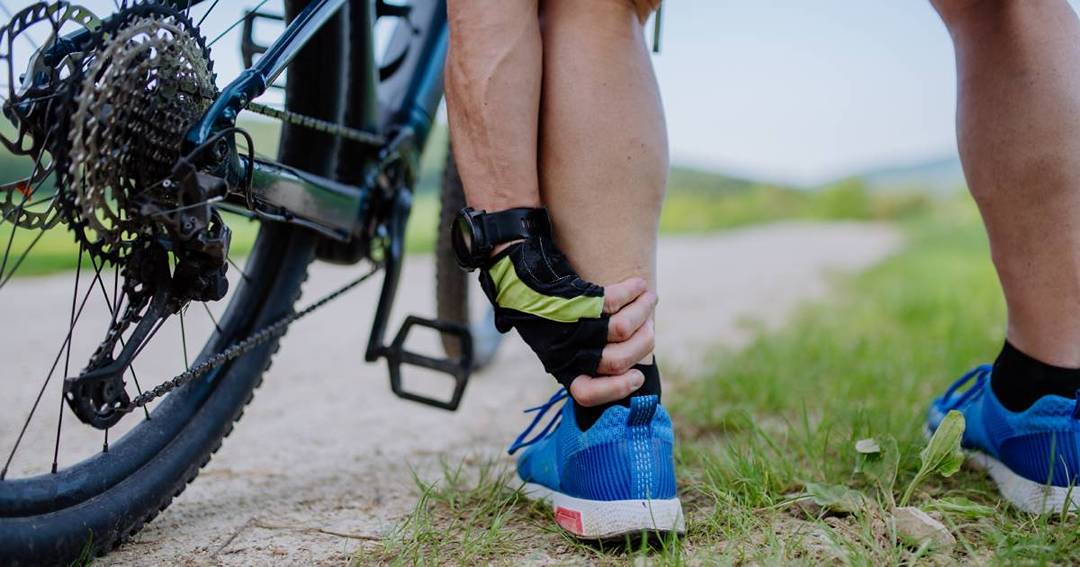
Lower Leg Pain Due to Cycling: Why Does it Happen?
Lower leg pain can really dampen our cycling adventures. It's a common complaint, and frankly, we've all probably experienced it at some point. Whether it's a nagging ache in the calf, a sharp pain in the shin, or persistent discomfort in the foot, it can make even short rides feel like marathons.
Understanding why these pains occur is crucial. After all, you want to enjoy your time on the bike, not dread it. Knowing the causes of lower leg pain helps you take the right steps to prevent shin splints and other injuries. If you are experiencing pain, it is important to address the root cause of the issue.
By learning about potential issues, you can make informed decisions about training, bike setup, and recovery. This knowledge empowers you to keep your lower legs healthy and strong to pedal without pain.
Understanding Lower Leg Anatomy
The lower leg comprises several key muscles and structures, including the calf muscles (gastrocnemius and soleus), the tibia (shinbone), and the Achilles tendon. These muscles work together to provide power and stability while pedaling. The calves are especially important because they help push the pedals down and lift the foot during each cycle stroke.
The tibia plays a supporting role in weight transfer and impact absorption. During cycling, these muscles are constantly used, which can make them prone to fatigue, strain, and overuse injuries, especially if the rider's form or bike setup isn't optimal.
Common Causes of Lower Leg Pain in Cyclists
-
Muscle Fatigue: Overusing the muscles without allowing enough time for recovery can lead to soreness and pain in the lower legs. If muscles aren't given time to repair, they become more prone to strain and injury.
-
Improper Bike Fit: A bike that doesn't fit properly can cause discomfort and pain. Issues like incorrect saddle height, handlebar position, or pedal alignment place extra strain on the lower leg muscles, causing them to work harder than they should.
-
Overexertion or Intensity: Pushing yourself too hard during long rides or sprints can result in muscle fatigue and pain. When you go beyond your limits, your body may struggle to keep up, putting unnecessary stress on the lower legs.
-
Poor Pedaling Technique: Inefficient pedaling, like pushing down too hard or using improper foot positioning, can lead to strain. This can overload the calf muscles, increasing the risk of injury and pain in the lower legs.
Identifying the Signs of Injury vs. Fatigue
It's important to recognize the difference between regular fatigue and potential injury. Soreness from cycling usually feels like a dull ache that fades with rest. However, persistent or intensifying pain may signal an injury, such as shin splints or tendinitis.
Shin splints often cause sharp, localized pain along the shinbone, while tendinitis results in swelling and pain in the tendon area, particularly around the Achilles. Paying attention to the type and intensity of pain is crucial. If the discomfort doesn't subside after rest or worsens over time, it may be time to seek professional advice to avoid worsening the condition.
Preventative Measures and Solutions
To prevent lower leg pain, start with a proper bike setup. Adjusting the saddle height, pedal position, and handlebar distance ensures proper alignment and reduces strain on the lower legs. Incorporate stretching and strengthening exercises focused on the calves and lower legs to improve flexibility and muscle endurance.
Gradually increase riding intensity to avoid overexertion and allow adequate time for recovery between rides. This progressive approach helps build strength while preventing injury. With the right preparation and care, you can enjoy cycling without the discomfort of lower leg pain.
When to Seek Professional Help
If lower leg pain persists despite rest or worsens over time, it's important to seek professional help. A cycling-specific physical therapist or doctor can assess your condition, diagnose it properly, and recommend targeted treatments. Early intervention can help prevent further damage and ensure a quicker recovery, allowing you to get back to cycling pain-free.

Comments (0)